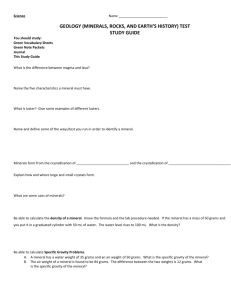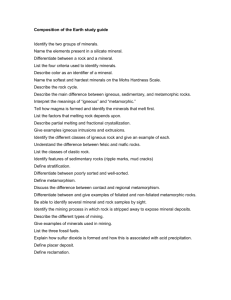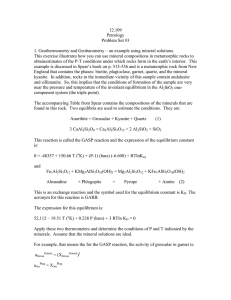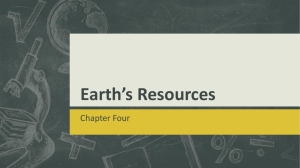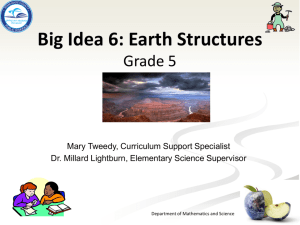geology (topographic maps, minerals and rocks) test study guide
advertisement
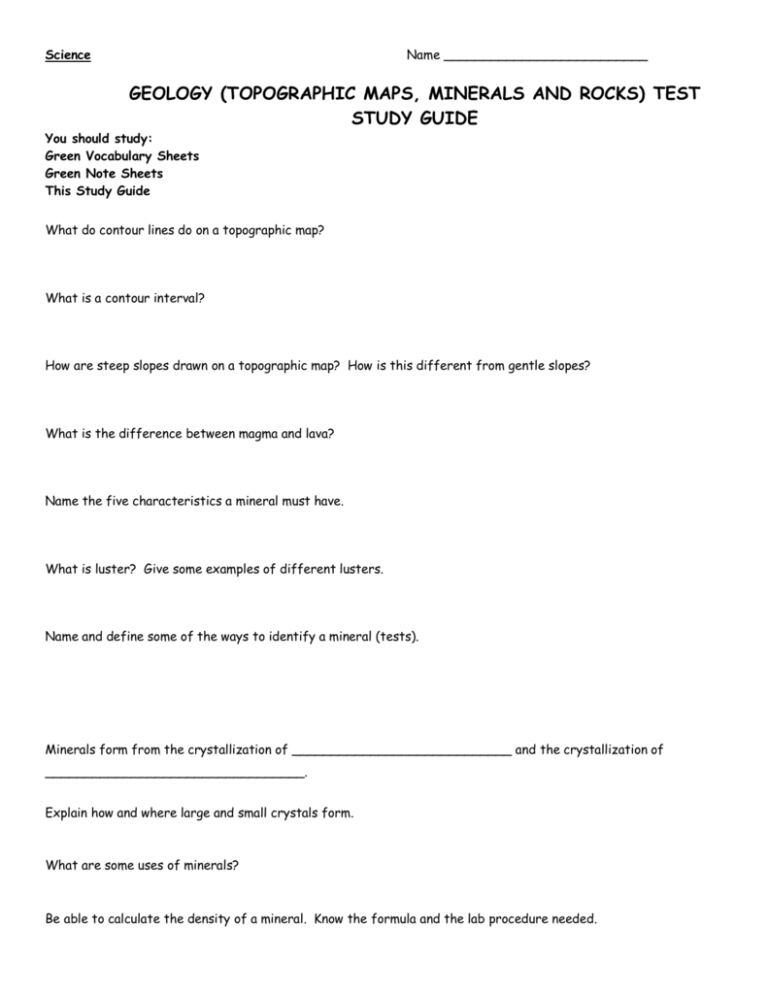
Science Name __________________________ GEOLOGY (TOPOGRAPHIC MAPS, MINERALS AND ROCKS) TEST STUDY GUIDE You should study: Green Vocabulary Sheets Green Note Sheets This Study Guide What do contour lines do on a topographic map? What is a contour interval? How are steep slopes drawn on a topographic map? How is this different from gentle slopes? What is the difference between magma and lava? Name the five characteristics a mineral must have. What is luster? Give some examples of different lusters. Name and define some of the ways to identify a mineral (tests). Minerals form from the crystallization of ____________________________ and the crystallization of _________________________________. Explain how and where large and small crystals form. What are some uses of minerals? Be able to calculate the density of a mineral. Know the formula and the lab procedure needed. Be able to calculate Specific Gravity Problems. A. A mineral has a water weight of 35 grams and an air weight of 50 grams. What is the specific gravity of the mineral? B. The air weight of a mineral is found to be 84 grams. The difference between the two weights is 12 grams. What is the specific gravity of the mineral? What is the difference between coarse grained, fine grained, and glassy igneous rocks? Give an example of each type. To classify a rock, geologists use what three properties? Name some agents of erosion that break down existing rocks on Earth. Describe the processes that create a sedimentary rock. Name the three types (classifications) of sedimentary rocks and give examples of each. How are metamorphic rocks classified? What is the difference between a foliated metamorphic rock and a nonfoliated metamorphic rock? Give an example of each. Be able to name three examples of each rock type (igneous, sedimentary, and metamorphic). What are some uses for common rocks? Describe the rock cycle.


